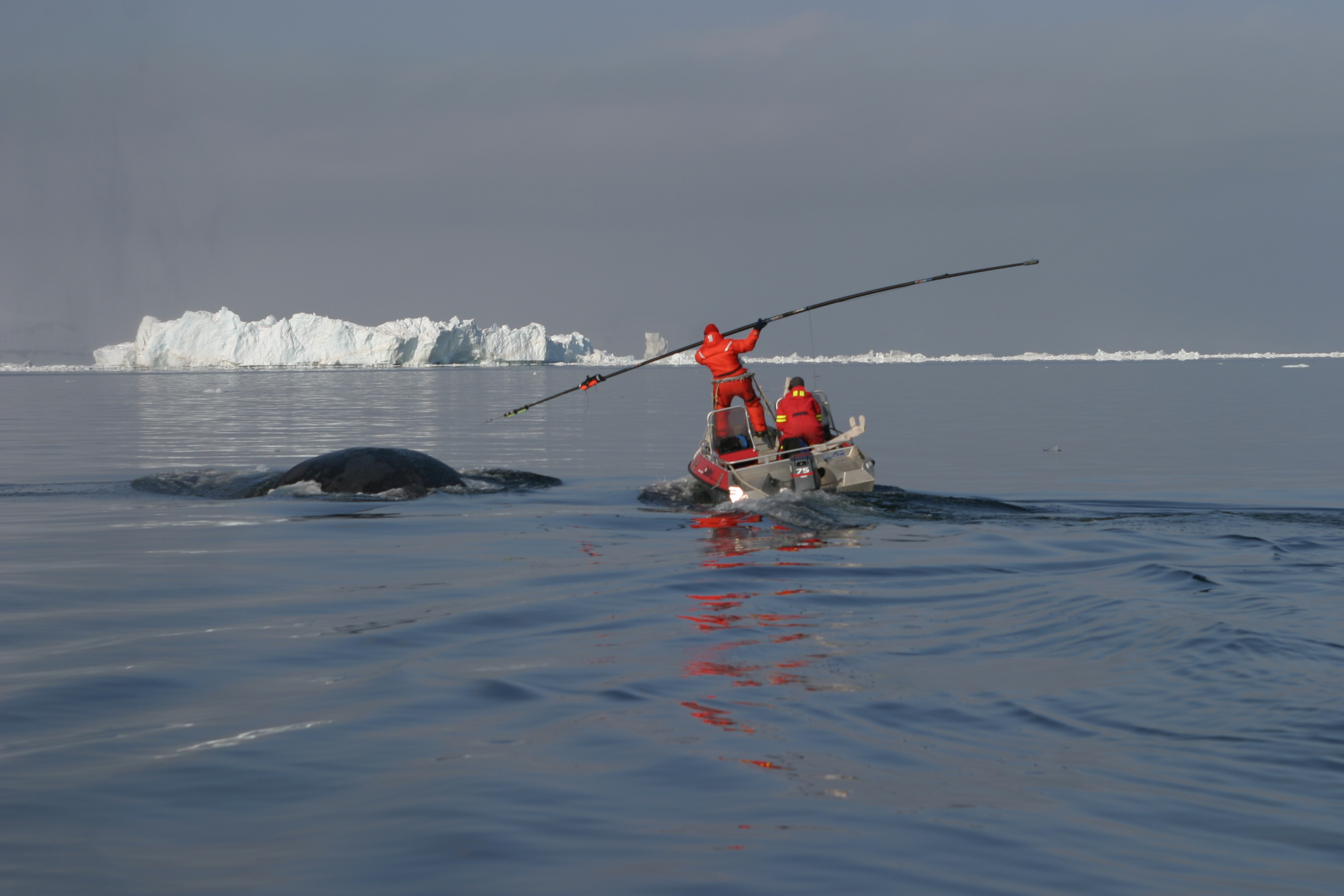Whales are famous for a lot of different things. Swimming great distances, dancing, trips to the spa – whalekind has a lot of tricks up their considerable whale sleeves. However new research could add to that list with the theory they might be pretty great at long-distance relationships too.
Bowhead whales (Balaena mysticetus) were hunted extensively for oil and baleen in the 1800s and early 1900s, but have since made a comeback. They are also thought to be able to live up to 200 years, making them the longest-living marine mammal. Beyond these points, however, little is known about exactly how these large creatures forage and socialize.
To find out more about what these whales get up to, a team of researchers tagged 12 bowheads in Disko Bay on the western coast of Greenland and studied 144 days of diving records.

The researchers tagged the whales to record dive data.
Image Credit: © Mads Peter Heide-Jørgensen
While their behavior may look chaotic, their analysis showed a 24-hour cycle of diving during the spring months. The whales were found to dive down to the deepest point in the afternoon, which then allowed them to track their prey up to the surface of the water. This behavior is known as the diel vertical migration. Bowhead whales are baleen whales that filter-feed marine invertebrates, including krill and crustaceans.
The paper authors described the whales as “chaotic self-sustained oscillators” that balance diving at depth for food and staying near the surface to breathe. They found that at least 8 of the 12 whales tagged were performing this diel diving behavior. This is similar to the behavior of blue whales, which are known to track the migration of their prey through the water column, rising to the surface at night. This ties in with theories that suggest calling to other whales at depth is energetically costly to the whales.
“We find that foraging whales dive deeper during the daytime in spring, with this diving behavior being in apparent synchrony with their vertically migrating prey,” said Professor Mads Peter Heide-Jørgensen at the Department of Birds and Mammals, Greenland Institute of Natural Resources, in a statement. “Until now, this hasn’t been shown for spring, and remained contradictory for autumn.”
The second potential discovery from the research is even more remarkable. The team observed two whales that seemed to dive in sync, despite at times being around 100 kilometers (62 miles) apart.
Over the course of the week, the pair – one female (BW05) and another whale of unknown sex (BW10) – were sometimes as close as 5 kilometers (3.1 miles) and sometimes hundreds of kilometers apart, and seemed to be synching their dives to occur at the same time of day. The depths that the whales dove to were not synched, potentially because of differences in individual foraging strategies and vertical prey distribution. The team suggests that diving and calling together even many kilometers apart could also be a predator avoidance strategy to avoid killer whales or to reinforce social bonds.
While the whales were physically apart, the researchers believe that they remained within hearing range of each other, though the whale noises were not recorded.
“Without direct observations, such as recordings of the two whales, it isn’t possible to determine that the individuals were exchanging calls,” said Professor Jonas Teilmann at the Department of Ecoscience, Aarhus University, nevertheless, “the observed subsurface behavior might be the first evidence supporting the acoustic herd theory of long-range signaling in baleen whales proposed by Payne and Webb back in 1971.”
This opens up the possibility that while the whales appear to be alone they could be diving with their long-distance besties.
“The possibility of acoustically connected whales, which seem to be diving alone but are actually together, is mind bending. Our study identifies a framework for studying the sociality and behavior of such chaotically moving, unrestrained marine animals, and we encourage the research community to collect more simultaneous tag data to confirm if our interpretation is appropriate,” Associate Professor Evgeny A. Podolskiy at the Arctic Research Center, Hokkaido University concluded.
The paper is published in the journal Physical Review Research.
Source Link: Bowhead Whales Could Be Diving In Sync With Their Long-Distance Pals